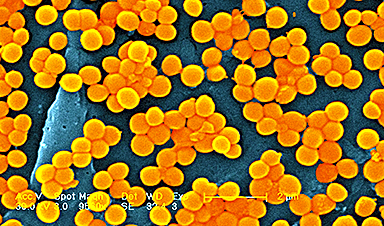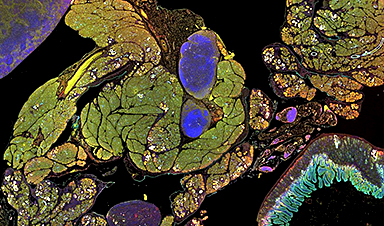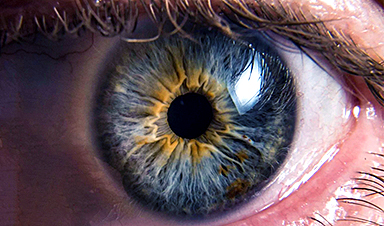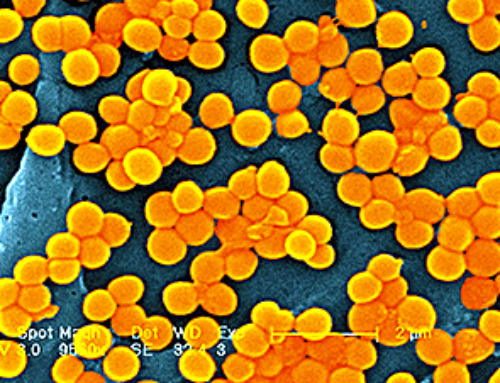Lassa fever has reached the US for the first time in a decade, in a case that has surprised health officials.
The middle-aged patient in Iowa, who was not identified, died a ‘short time’ after being hospitalized with the disease, which can cause bleeding from the eyes and seizures.
The patient had just returned to the US from West Africa, where the disease is endemic and behind an outbreak in Nigeria, where a total of 9,500 suspected and confirmed cases were reported this year.
Health officials from the CDC and Iowa Department of Health said the patient had no symptoms while traveling, adding the risk of transmission was ‘extremely low’ as people are only contagious when they have symptoms.
They did not reveal when the patient started to suffer symptoms, or when they returned to Iowa, and did not say whether there were any close contacts.
However, the Iowa case still sparked concerns among health experts.
Below, DailyMail.com details everything you should know about Lassa fever:
What is Lassa fever?
Lassa fever is a severe viral illness that leaves patients suffering from symptoms within a week to three weeks of infection.
The disease is endemic to West African countries including Guinea, Sierra Leone, Liberia and Nigeria – where it is spreading.
Experts say this may be due to a proliferation in the number of rodents in the country that carry the infection, called Mastomys rats, raising the risk of a human infection.
But there are also sporadic cases recorded outside of Africa, which are linked to people traveling from the region.
Lassa Fever was first discovered in 1969 after two missionary nurses died in the Nigerian town of Lassa from a mysterious illness.
There have been nine cases recorded in the US to date, with each linked to recent travel from another country.
How do you catch Lassa fever?
Lassa fever is a virus carried by Mastomys rats, a species of rodents common across sub-Saharan Africa, and it causes no symptoms in the rodents.
People catch the disease by touching surfaces contaminated with the urine, droppings or saliva from the rats and then touching their mouths.
They can also become infected after eating foods contaminated by rats or if the virus gets into an open cut or sore.
Human-to-human transmission can occur only if someone starts to show symptoms of the virus, which tend to begin within a week of infection.
It can be passed on via touching the individual’s feces, blood, urine or saliva and then touching your own mouth or eating contaminated food.
A person cannot spread the disease if they are showing no signs of infection.
How deadly is it?
Around 15 percent of patients with severe disease die from Lassa fever, the World Health Organization suggests.
But Dr Robert Garry, a professor at Tulane Medical School in New Orleans, suggested to STAT News the fatality rate in severe cases can be as high as 70 percent in some areas where it is difficult to get adequate treatment.
Dr Garry was basing his higher estimation on his experience working in Sierra Leone, where the virus is endemic and where he has several research projects.
Scientists warn children under 10 years old and pregnant women are particularly at risk of the disease because they have weaker immune systems. For pregnant women, data shows more than 95 percent of them miscarry their fetus.
In an infection, Lassa fever attacks multiple organ systems in the body, including the liver, spleen, kidneys and lining of blood vessels.
This can cause inflammation in the organs and stop them from working properly, leading to the death of the patient.
What are the symptoms?
The World Health Organization says about 80 percent of people infected with the virus have no symptoms, meaning can not spread it.
Warning signs tend to begin about a week to three weeks after infection.
In the early stages, patients may suffer from a slight fever, feeling tired and weak and a headache — similar to other hemorrhagic fevers like Ebola and malaria.
But in later stages, especially if a patient is not treated, the individual may suffer from more serious symptoms such as bleeding from the eyes, vomiting, difficulty breathing, facial swelling and pain in the chest, back and abdomen.
How is it detected?
Doctors say diagnosing Lassa fever can be difficult to diagnose because symptoms vary and are similar to those caused by other diseases.
In the early stages, symptoms may appear similar to those for malaria, shigellosis, typhoid fever and yellow fever.
To diagnose an infection, the World Health Organization says samples from the patient need to be tested in a high level bio-safety lab to confirm — and contain — the infection.
Bodily fluids, such as saliva, blood or urine, are tested for the virus, and in some cases, fluids taken via spinal tap are also tested.
Is there a vaccine?
Doctors use the antiviral drug Ribavirin to treat patients suffering from the disease. It is most effective when administered shortly after a patient shows symptoms.
The CDC also recommends anyone diagnosed with the disease receives rest, hydration and other drugs to manage their symptoms.
The World Health Organization says there is currently no vaccine against the virus, and that efforts should instead focus on prevention.
This relies on ‘good hygiene’ and discouraging rodents from entering homes, the agency said.
This may include storing food in rodent-proof containers, disposing of garbage far from the home, maintaining a clean home and keeping cats, which prey on rats.
Can Lassa fever lead to complications?
The CDC says about one of three people infected with the virus are left with hearing loss after the initial infection resolves.
The agency warns this can happen in both mild and moderate cases of the disease.
The CDC also warns that if a pregnant woman is infected, there is a high risk of a miscarriage and about 95 percent of fetuses do not survive.
Am I at risk of catching Lassa fever?
There have been nine cases of the disease recorded in the US since 1969, including the Iowa patient this week.
Each was linked to recent foreign travel, with patients becoming ill soon after they returned to the US. There was no subsequent transmission.
The case before the latest was recorded in May 2015 in a New Jersey resident who had recently traveled to Liberia. The patient also died.
Overall, out of the nine patients diagnosed in the US at least three have died.
Others survived but reported being left partially deaf and regularly suffering from bouts of pain and severe fatigue.
Experts say the risk from Lassa fever to Americans is low, and there are no signs it has spread in the US.
But they warn there is a risk of infection if someone visits a West African country where the disease is endemic.
The UK also recorded two cases of the disease in February 2022 in travelers who were returning from Mali.
There was another case in the UK in 2009, in a 66-year-old man who had recently returned to Britain from Abuja in Nigeria.
How is the US managing the recent case?
Officials in Iowa isolated the patient at a specialist disease hospital after they came forward with their symptoms.
The individual was described as only having a ‘short illness’ before dying.
No further details have been revealed, and the CDC says the risk the virus has spread is ‘low.’
News
How the FDA opens the door to risky chemicals in America’s food supply
Lining the shelves of American supermarkets are food products with chemicals linked to health concerns. To a great extent, the FDA allows food companies to determine for themselves whether their ingredients and additives are [...]
Superbug crisis could get worse, killing nearly 40 million people by 2050
The number of lives lost around the world due to infections that are resistant to the medications intended to treat them could increase nearly 70% by 2050, a new study projects, further showing the [...]
How Can Nanomaterials Be Programmed for Different Applications?
Nanomaterials are no longer just small—they are becoming smart. Across fields like medicine, electronics, energy, and materials science, researchers are now programming nanomaterials to behave in intentional, responsive ways. These advanced materials are designed [...]
Microplastics Are Invading Our Arteries, and It Could Be Increasing Your Risk of Stroke
Higher levels of micronanoplastics were found in carotid artery plaque, especially in people with stroke symptoms, suggesting a potential new risk factor. People with plaque buildup in the arteries of their neck have been [...]
Gene-editing therapy shows early success in fighting advanced gastrointestinal cancers
Researchers at the University of Minnesota have completed a first-in-human clinical trial testing a CRISPR/Cas9 gene-editing technique to help the immune system fight advanced gastrointestinal (GI) cancers. The results, recently published in The Lancet Oncology, show encouraging [...]
Engineered extracellular vesicles facilitate delivery of advanced medicines
Graphic abstract of the development of VEDIC and VFIC systems for high efficiency intracellular protein delivery in vitro and in vivo. Credit: Nature Communications (2025). DOI: 10.1038/s41467-025-59377-y. https://www.nature.com/articles/s41467-025-59377-y Researchers at Karolinska Institutet have developed a technique [...]
Brain-computer interface allows paralyzed users to customize their sense of touch
University of Pittsburgh School of Medicine scientists are one step closer to developing a brain-computer interface, or BCI, that allows people with tetraplegia to restore their lost sense of touch. While exploring a digitally [...]
Scientists Flip a Gut Virus “Kill Switch” – Expose a Hidden Threat in Antibiotic Treatment
Scientists have long known that bacteriophages, viruses that infect bacteria, live in our gut, but exactly what they do has remained elusive. Researchers developed a clever mouse model that can temporarily eliminate these phages [...]
Enhanced Antibacterial Polylactic Acid-Curcumin Nanofibers for Wound Dressing
Background Wound healing is a complex physiological process that can be compromised by infection and impaired tissue regeneration. Conventional dressings, typically made from natural fibers such as cotton or linen, offer limited functionality. Nanofiber [...]
Global Nanomaterial Regulation: A Country-by-Country Comparison
Nanomaterials are materials with at least one dimension smaller than 100 nanometres (about 100,000 times thinner than a human hair). Because of their tiny size, they have unique properties that can be useful in [...]
Pandemic Potential: Scientists Discover 3 Hotspots of Deadly Emerging Disease in the US
Virginia Tech researchers discovered six new rodent carriers of hantavirus and identified U.S. hotspots, highlighting the virus’s adaptability and the impact of climate and ecology on its spread. Hantavirus recently drew public attention following reports [...]
Studies detail high rates of long COVID among healthcare, dental workers
Researchers have estimated approximately 8% of Americas have ever experienced long COVID, or lasting symptoms, following an acute COVID-19 infection. Now two recent international studies suggest that the percentage is much higher among healthcare workers [...]
Melting Arctic Ice May Unleash Ancient Deadly Diseases, Scientists Warn
Melting Arctic ice increases human and animal interactions, raising the risk of infectious disease spread. Researchers urge early intervention and surveillance. Climate change is opening new pathways for the spread of infectious diseases such [...]
Scientists May Have Found a Secret Weapon To Stop Pancreatic Cancer Before It Starts
Researchers at Cold Spring Harbor Laboratory have found that blocking the FGFR2 and EGFR genes can stop early-stage pancreatic cancer from progressing, offering a promising path toward prevention. Pancreatic cancer is expected to become [...]
Breakthrough Drug Restores Vision: Researchers Successfully Reverse Retinal Damage
Blocking the PROX1 protein allowed KAIST researchers to regenerate damaged retinas and restore vision in mice. Vision is one of the most important human senses, yet more than 300 million people around the world are at [...]
Differentiating cancerous and healthy cells through motion analysis
Researchers from Tokyo Metropolitan University have found that the motion of unlabeled cells can be used to tell whether they are cancerous or healthy. They observed malignant fibrosarcoma [...]





















